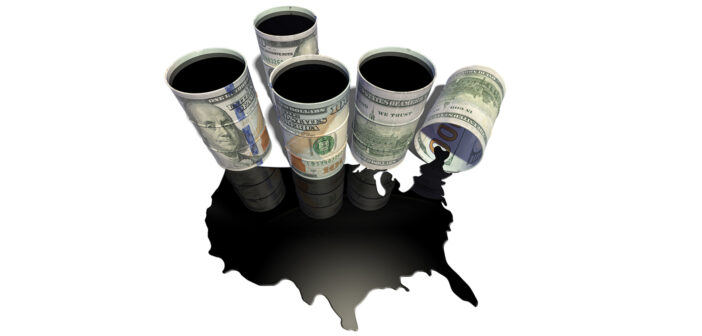The Strategic Petroleum Reserve (SPR) was included in the 1975 Energy Policy and Conservation Act and intended to hold up to 700 million barrels of oil in the event of an emergency. The SPR was created following the 1973 Middle East Oil Embargo, when the price of crude oil tripled over six months, leading to a severe economic recession. The SPR is supposed to buffer against such disruptions that might otherwise lead to an economic or national security emergency.
On March 31, President Biden announced that one million barrels of oil would be released from the SPR per day for six months to help offset the rising oil and gasoline prices resulting from the Ukrainian War. The price of a barrel of crude oil had increased from $73.91 on Christmas Eve to a high of $133.18 on March 8. A rule of thumb is that every $10/barrel increase in the price of oil increases the price of gas by about $0.25/gallon. Consequently, the average price of gas in the U.S. increased from $3.38/gallon around Christmas to $4.33/gallon by the end of March.
Unfortunately, releasing oil from the SPR will have minimal effect on oil and gasoline prices. The U.S. consumes approximately 20 million barrels of oil/day while producing 12 million barrels/day. Russia is the world’s third largest oil producer, producing 10.5 million barrels/day. Total world oil production is nearly 90 million barrels/day. Thus, the oil released by the SPR represents 5% of U.S. daily oil consumption, 1.1% of daily world production and 9.5% of daily Russian production. Thus, oil released from the SPR does not significantly displace lost oil production due to the war.
The price of crude oil had already begun falling a week prior to the announcement of the SPR oil release, with the price settling around $108/barrel. The price did not further fall after the release was announced, illustrating the minimal impact the SPR has on the price of oil. Consequently, gasoline remains around $4.09/gallon in the Flint area, which is what its price has been since the war began.
Releasing oil from the SPR is a symbolic gesture for elected officials to appear to be “doing something” in the face of voter pushback due to rising oil and gas prices. Given that gasoline is a necessity with few substitutes, consumers are largely stuck paying the higher price.
Consequently, every president since George H.W. Bush has ordered an SPR release, all with minimal impact on prices. This is an expensive gesture, as the 180 million barrels that will be released from the SPR over the next six months will have to be replaced. At $100/barrel, replacing this oil in the SPR will cost the federal government $18 billion, or $70 for every adult in the U.S., far more than what they are saving at the pump. The only thing that will bring permanent relief is a lasting peace agreement between Russia and Ukraine.
_vallav_ / stock.adobe.com














